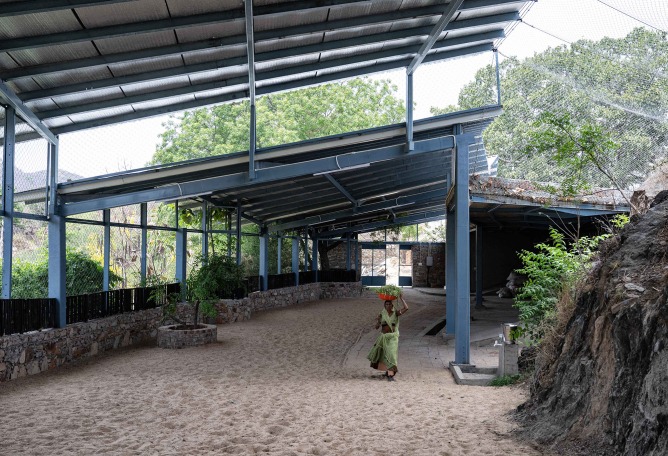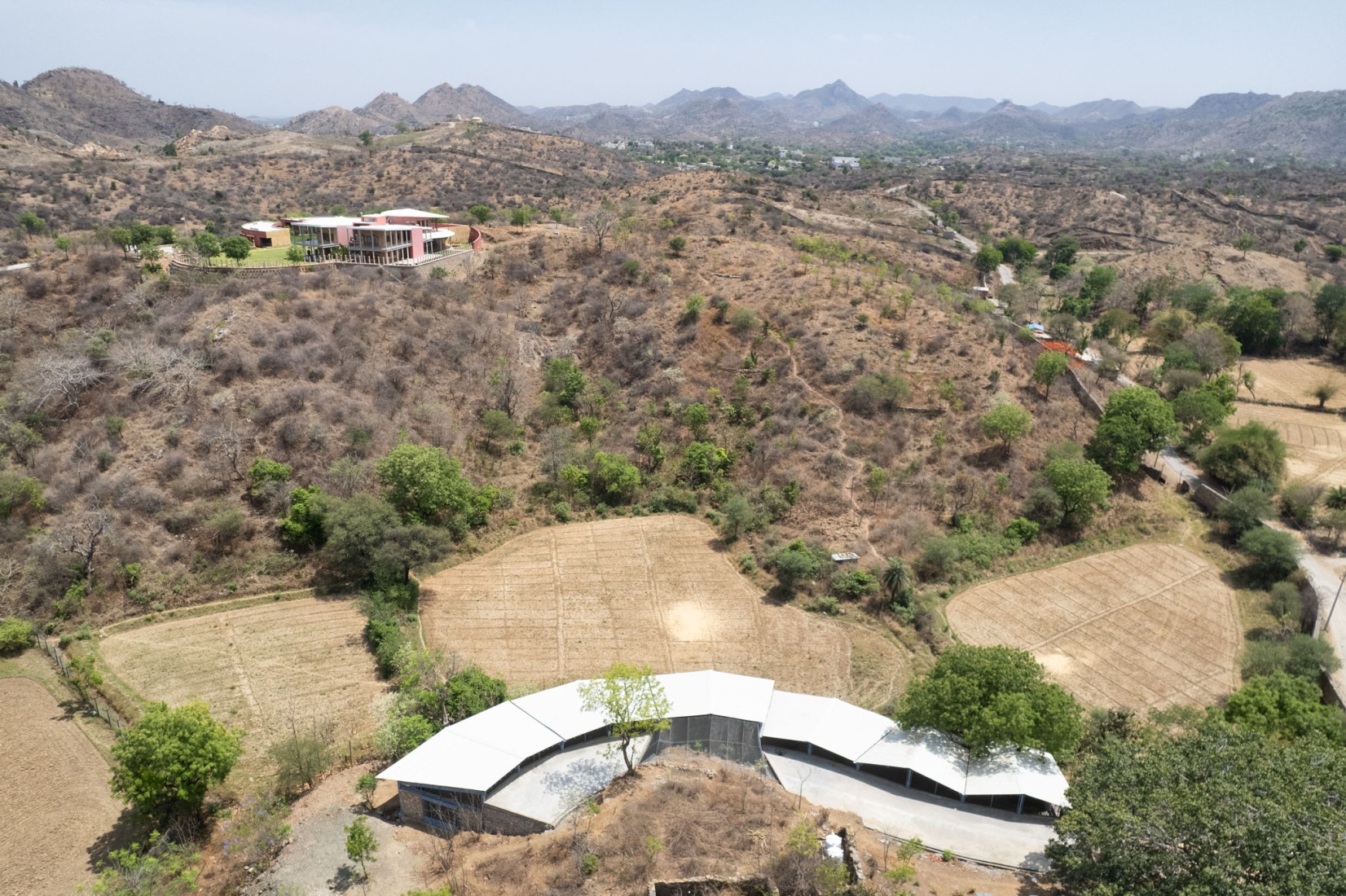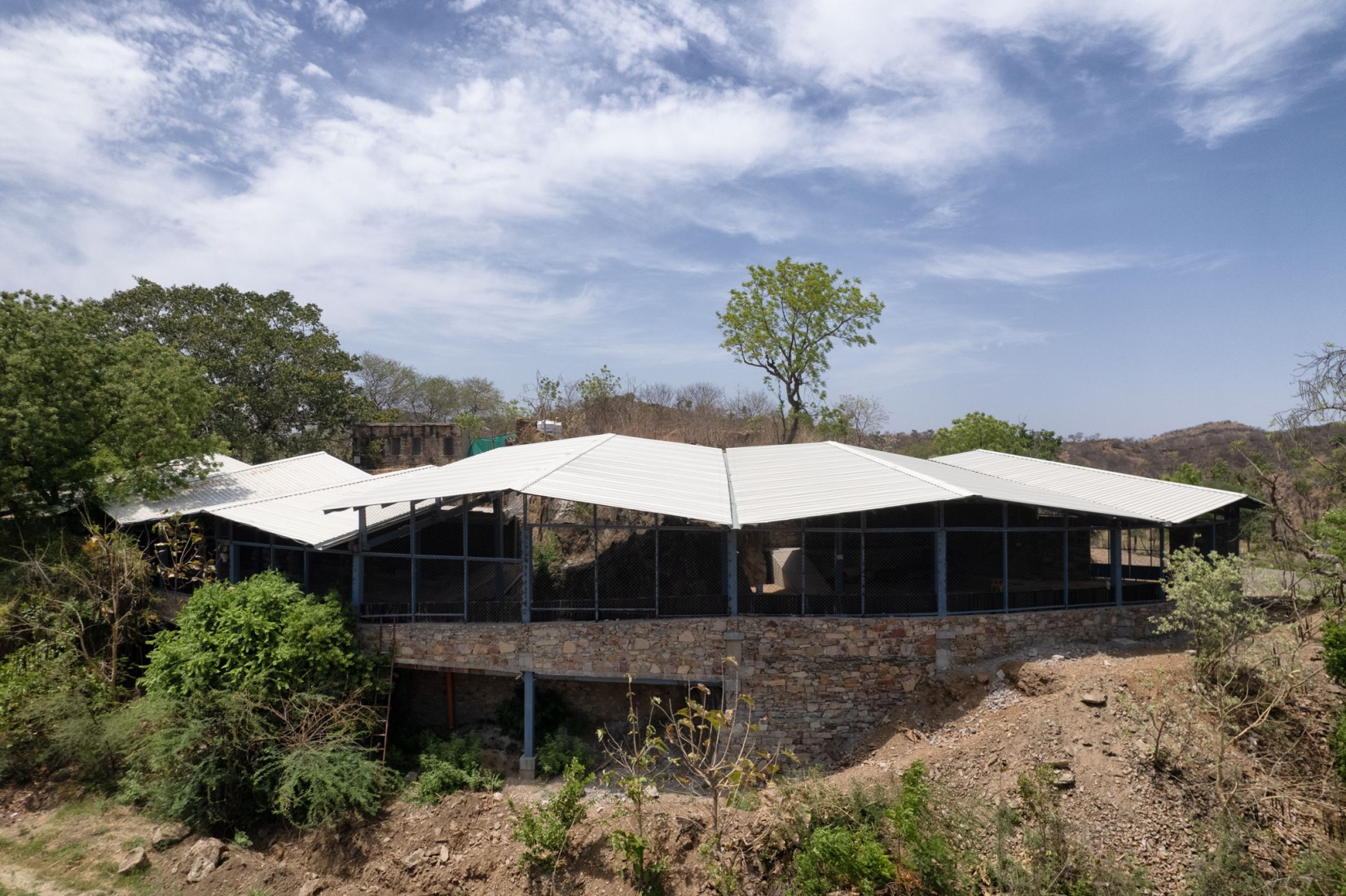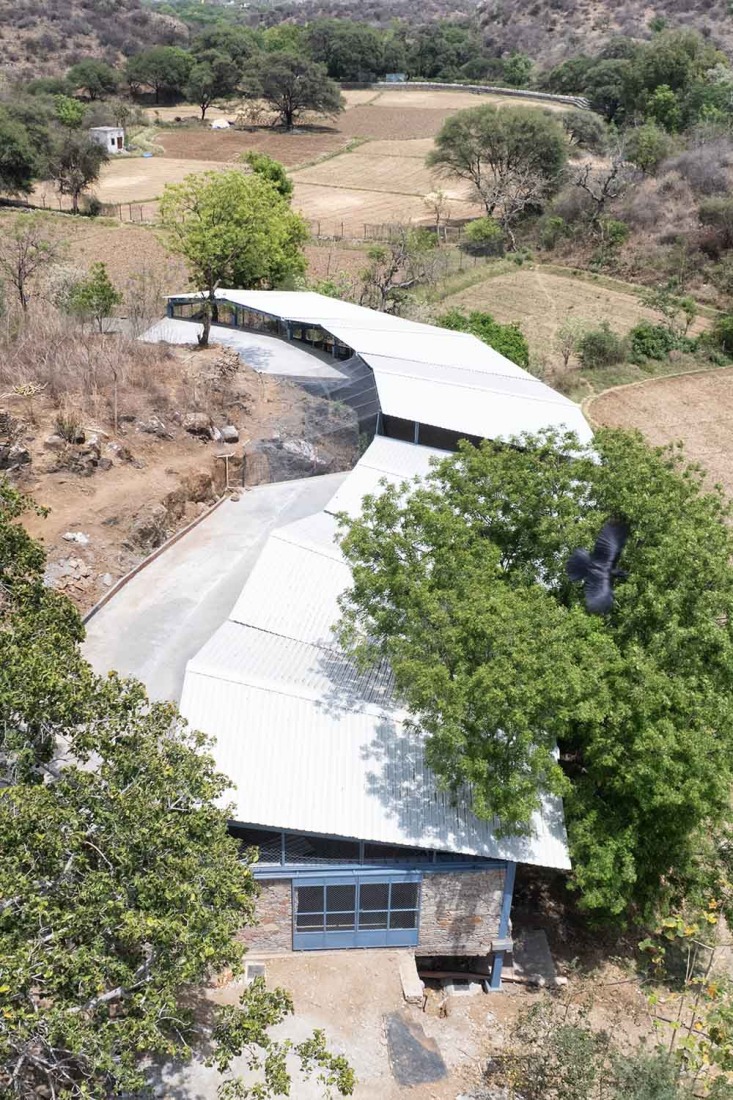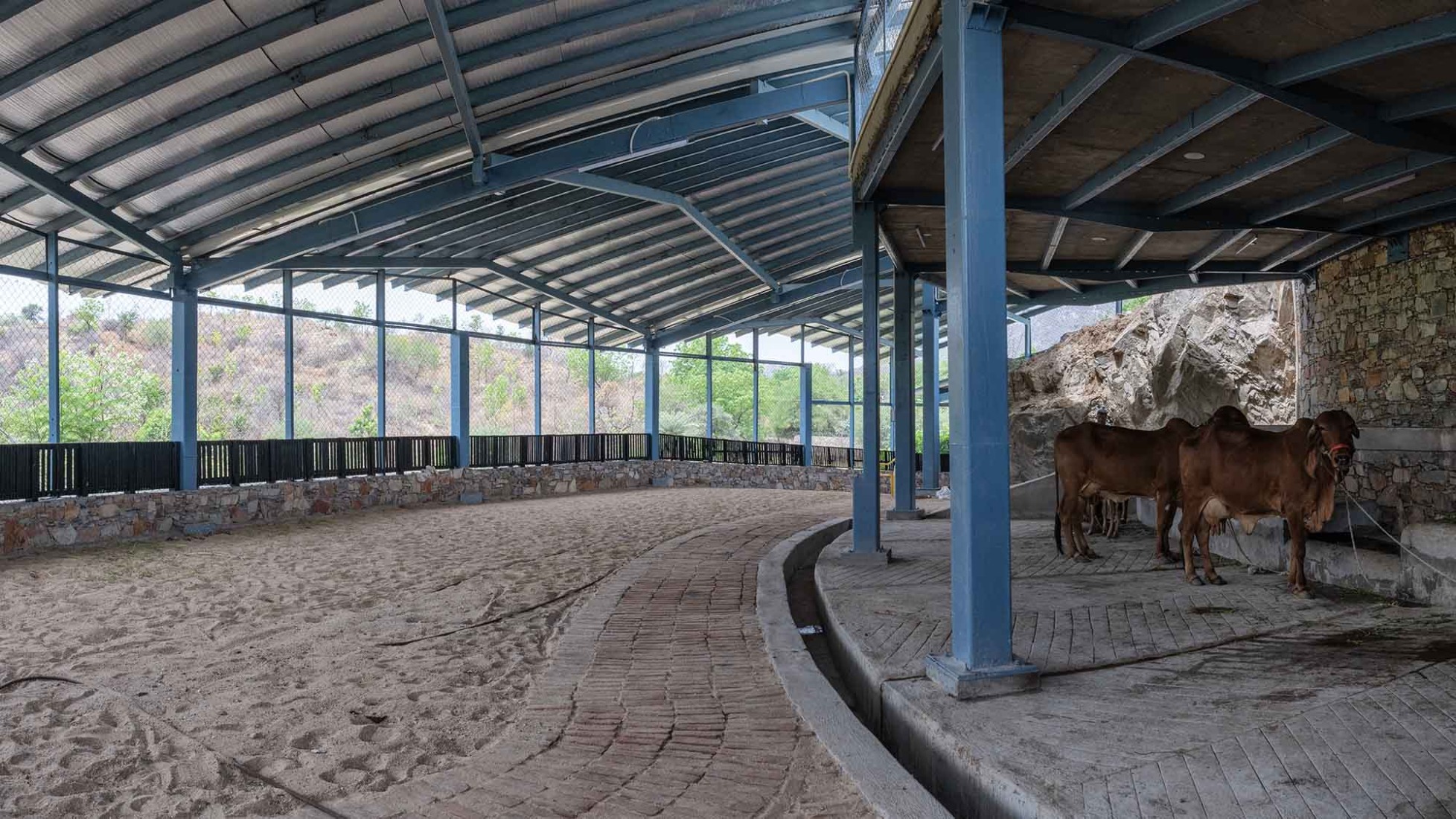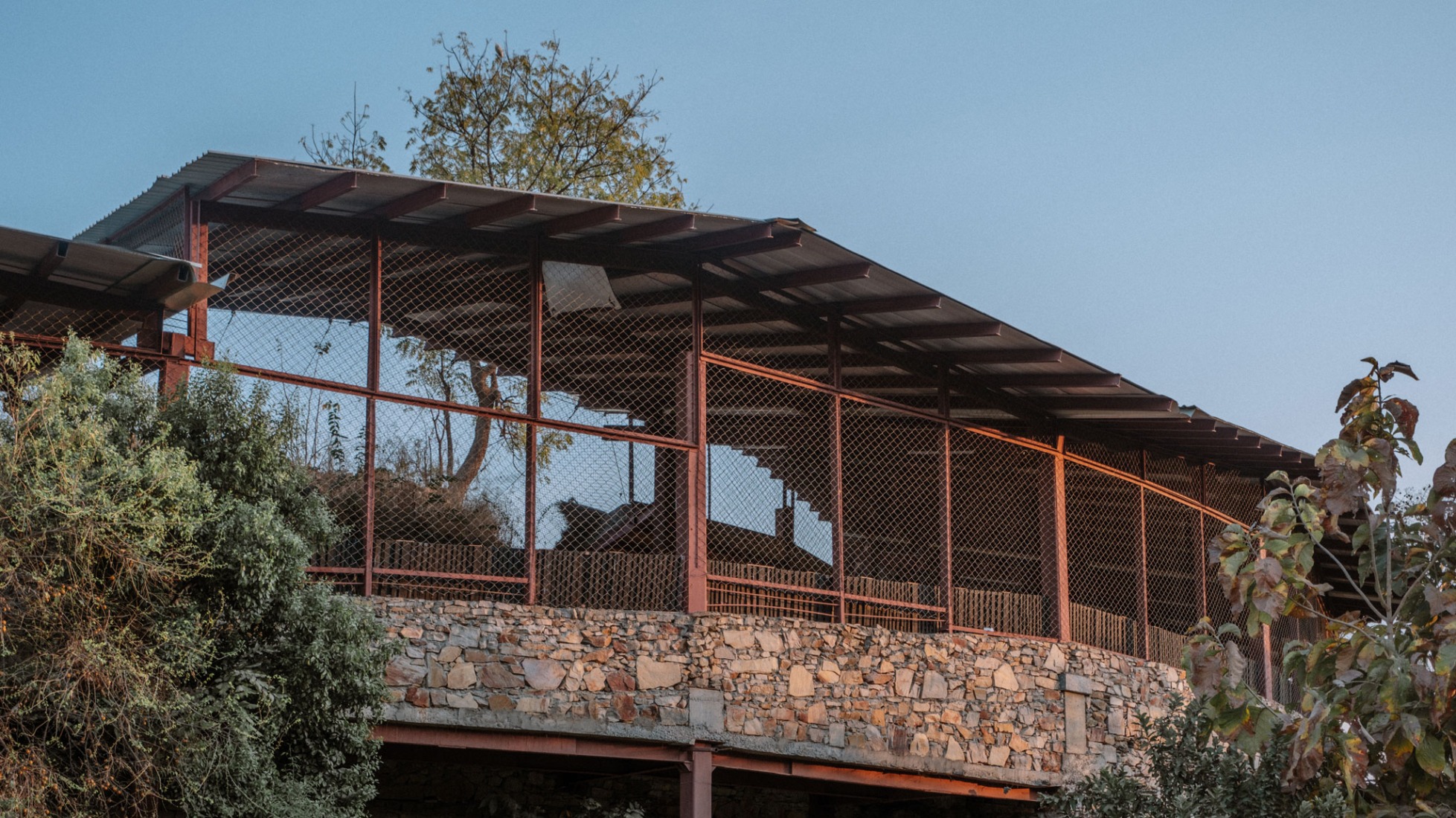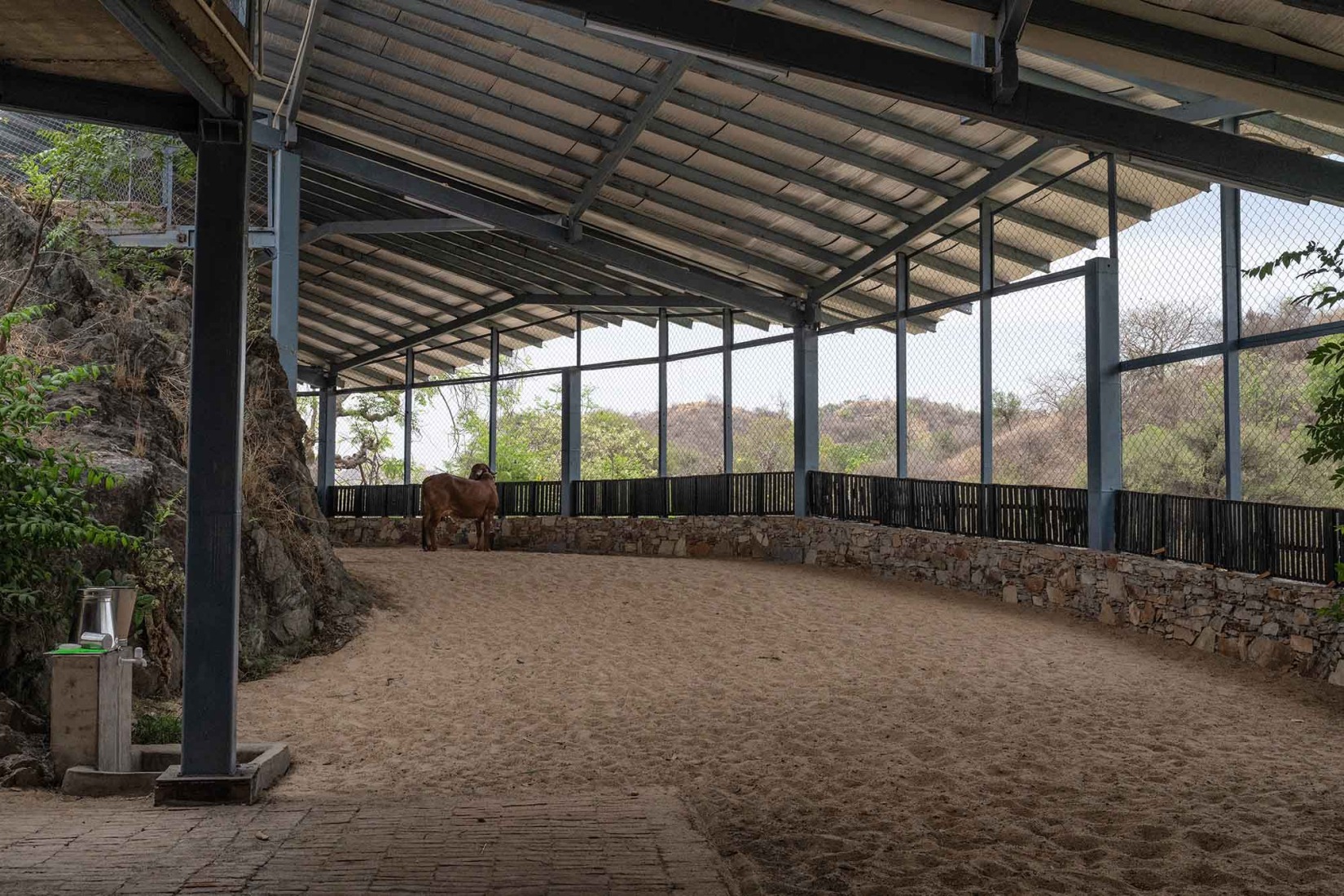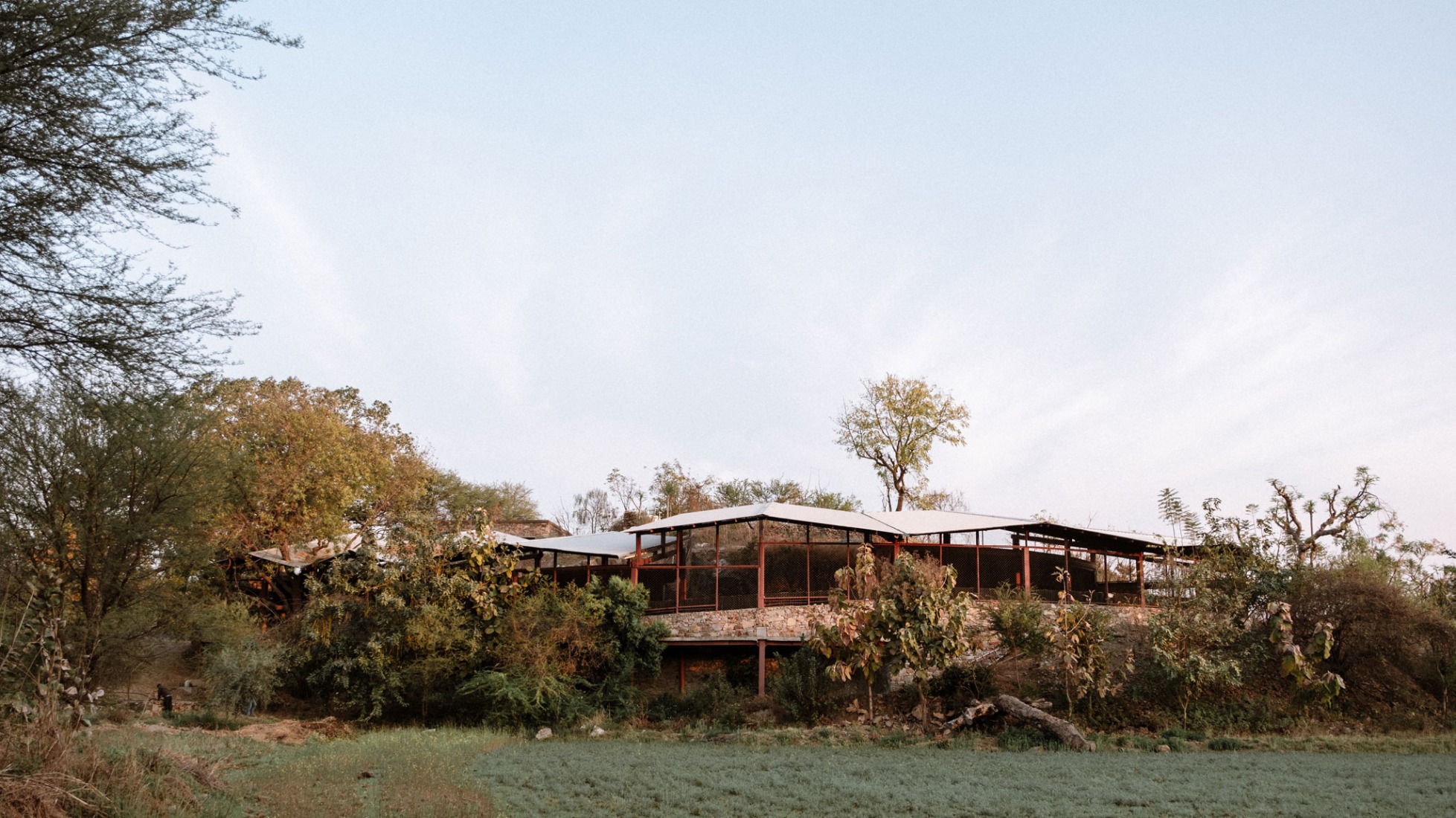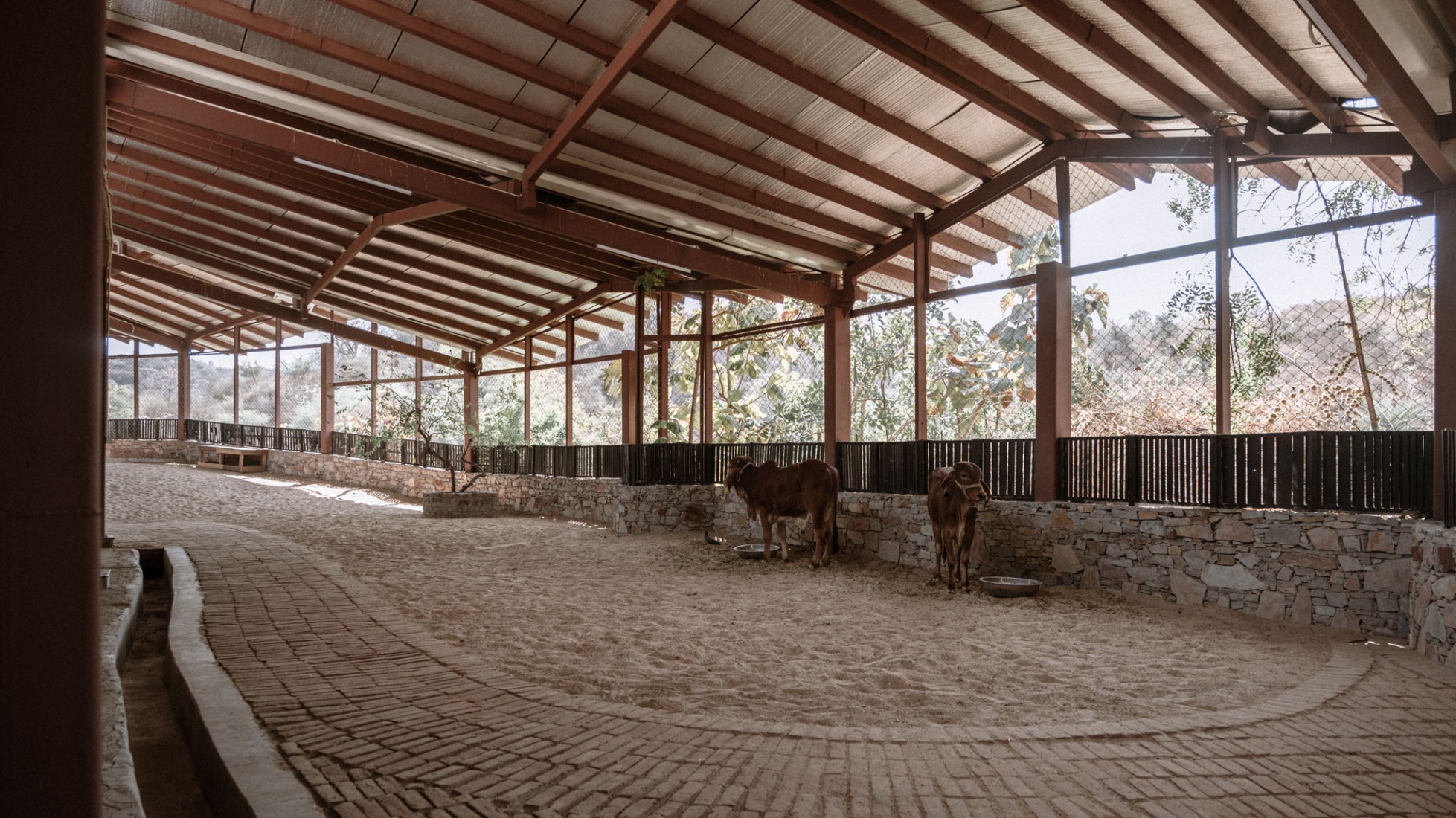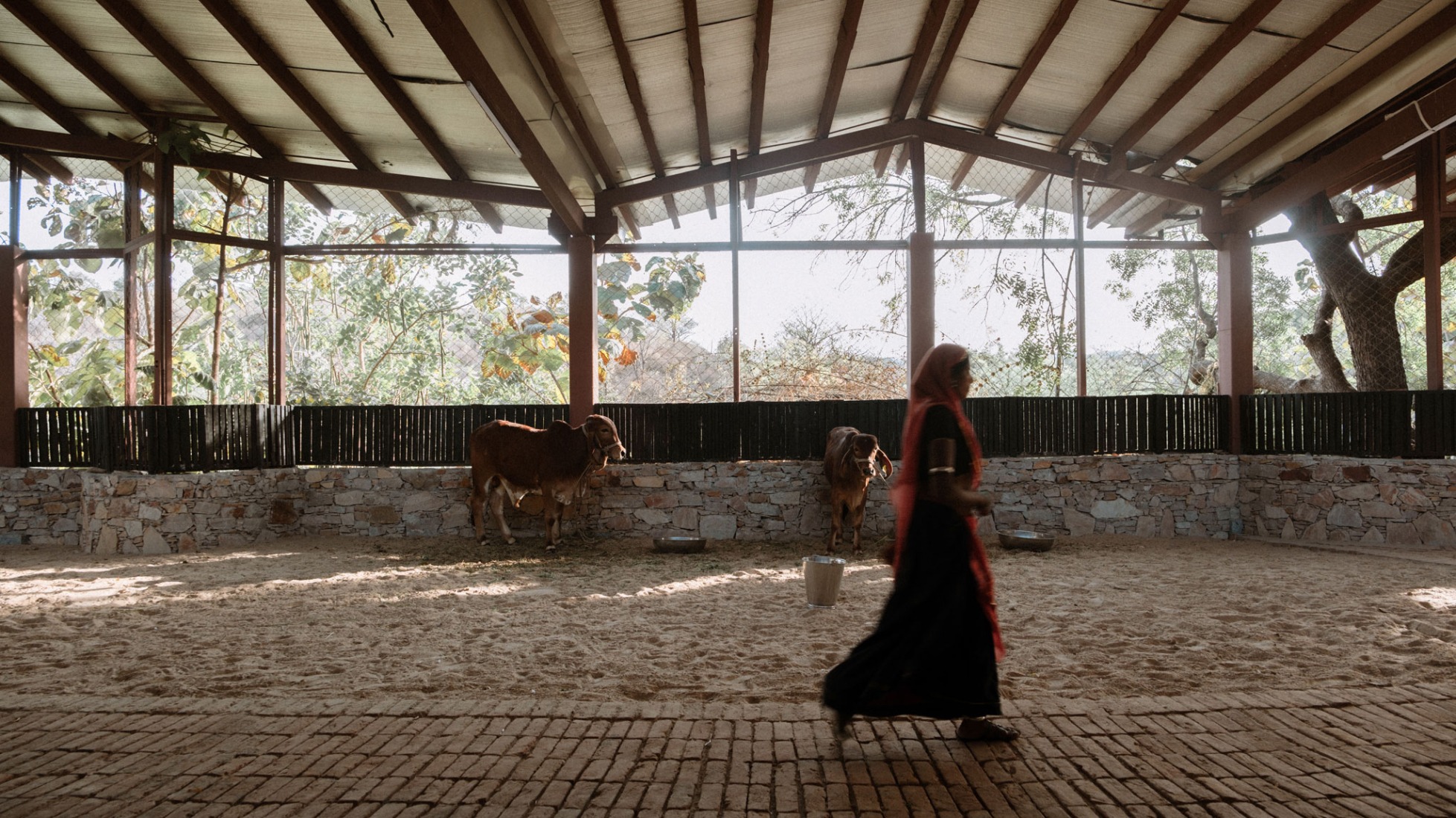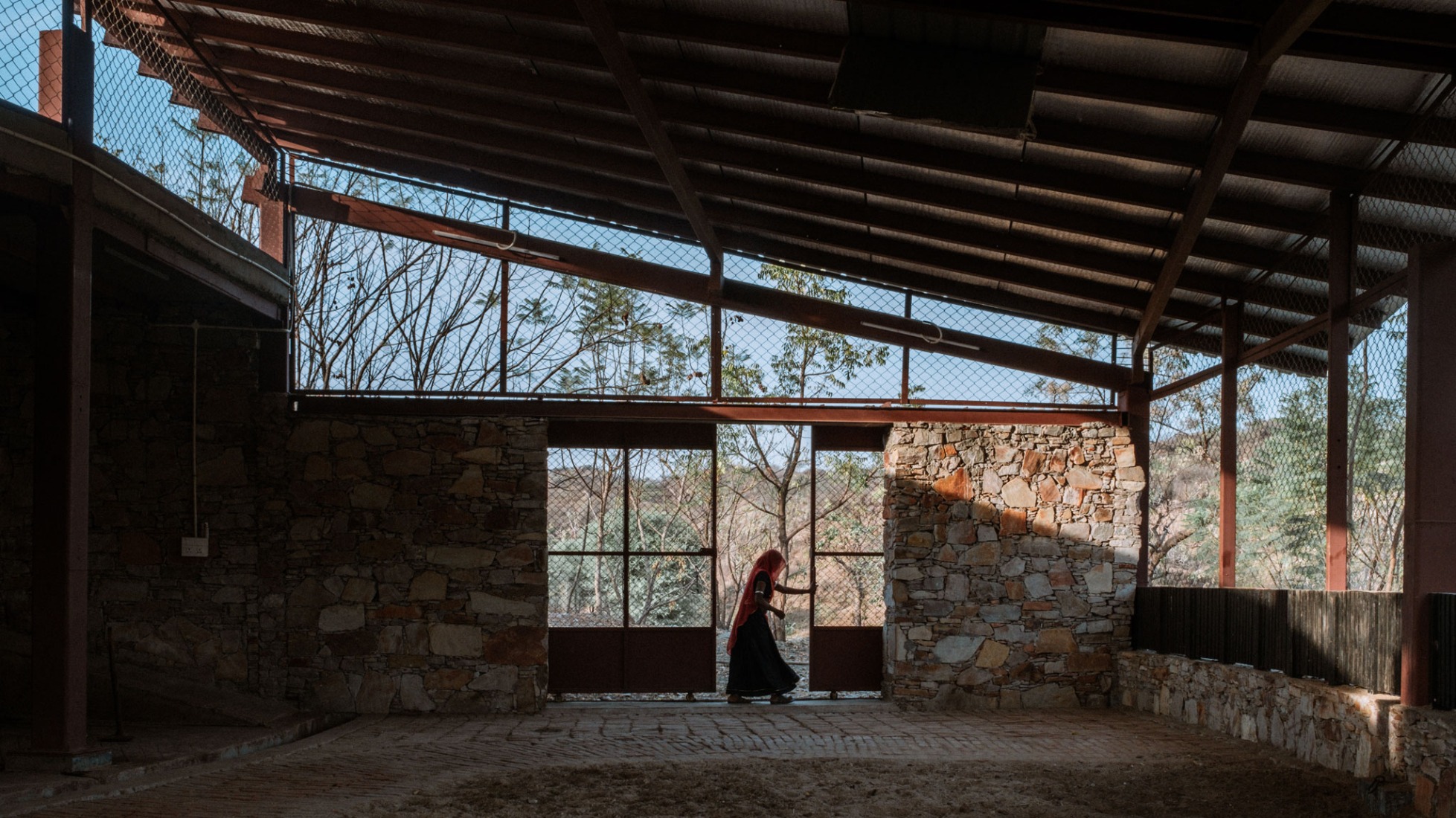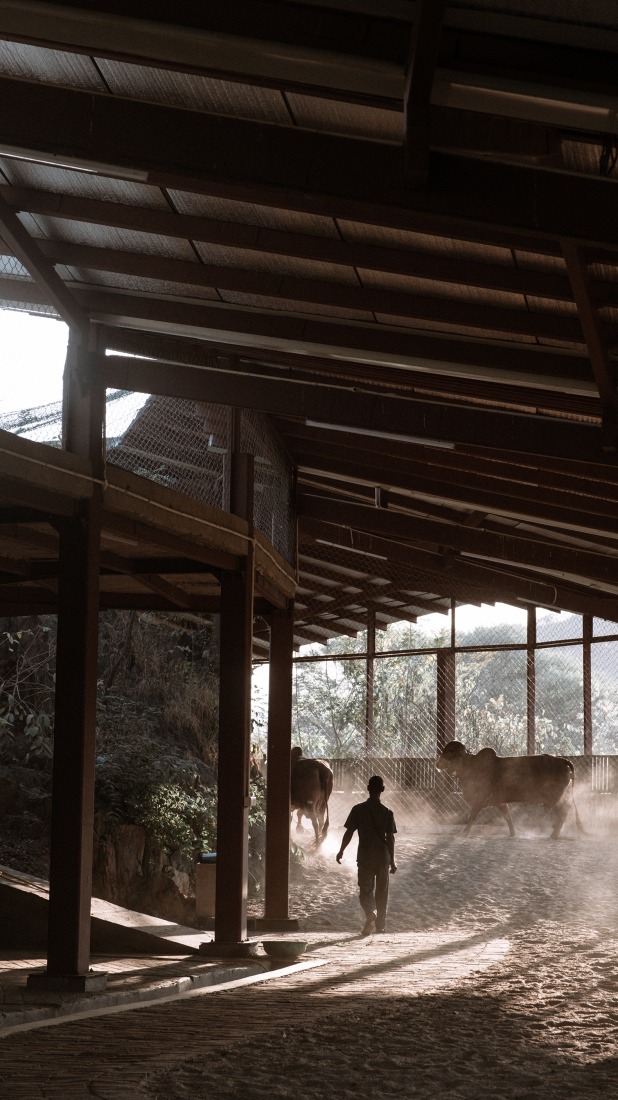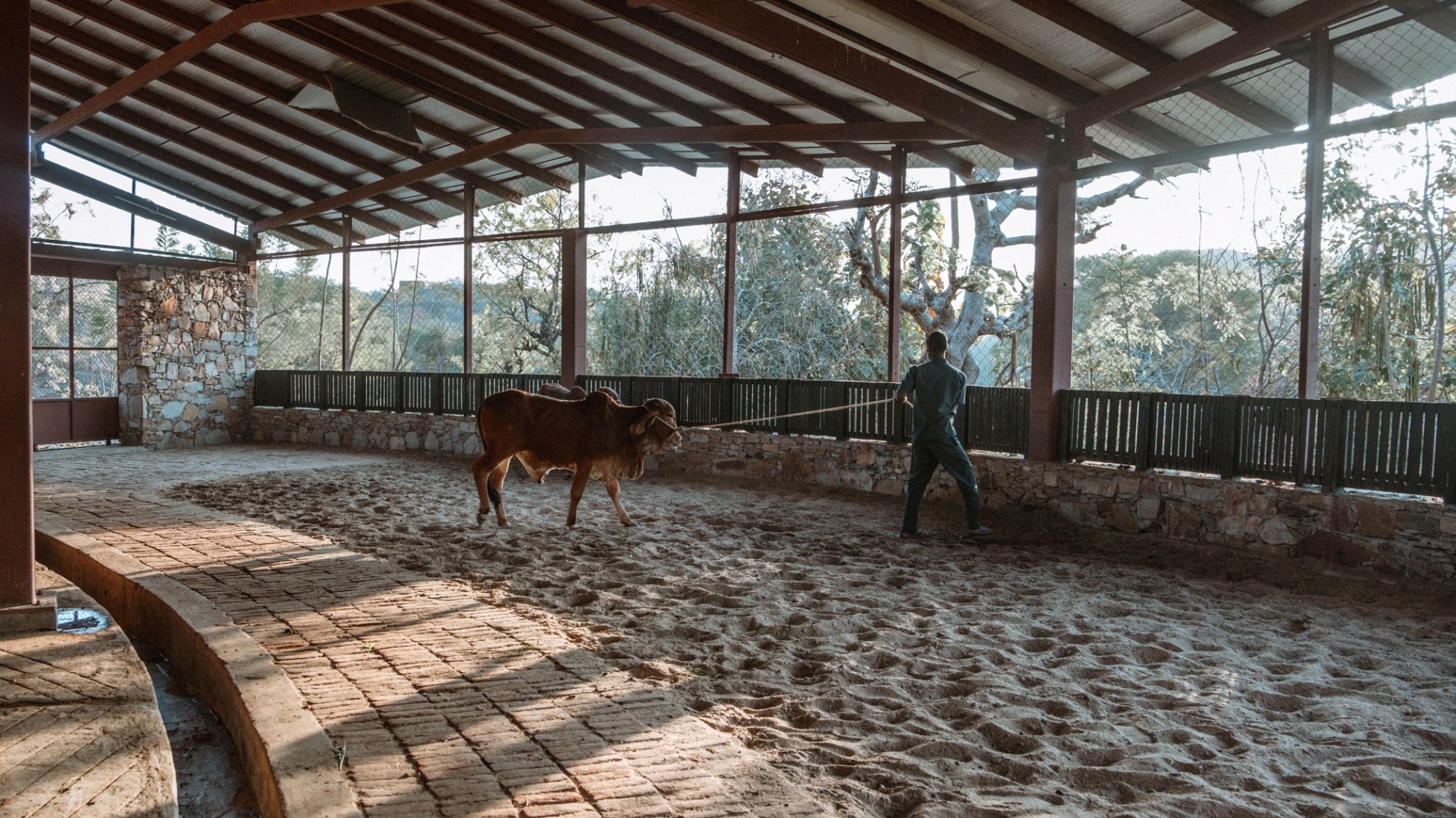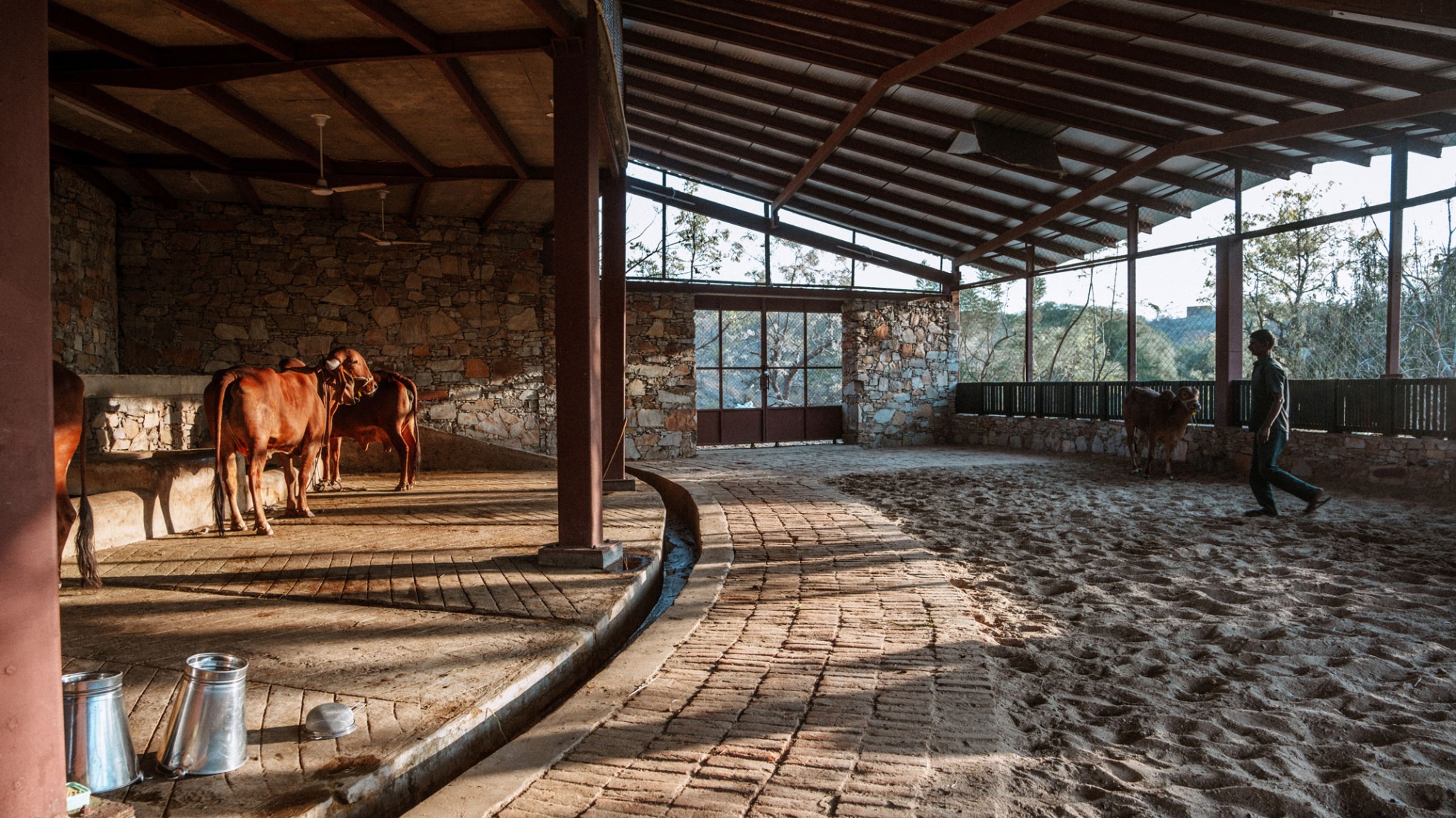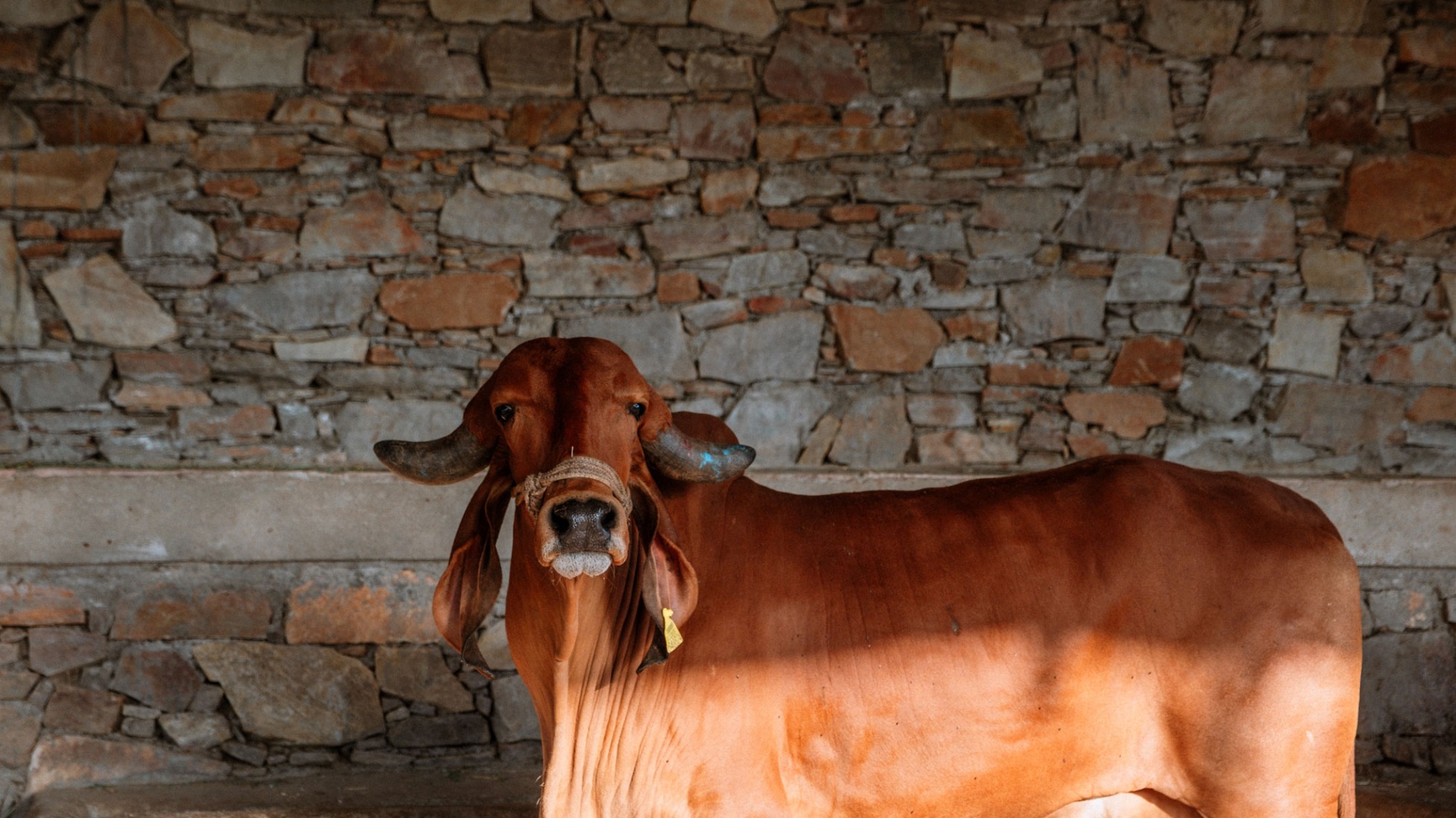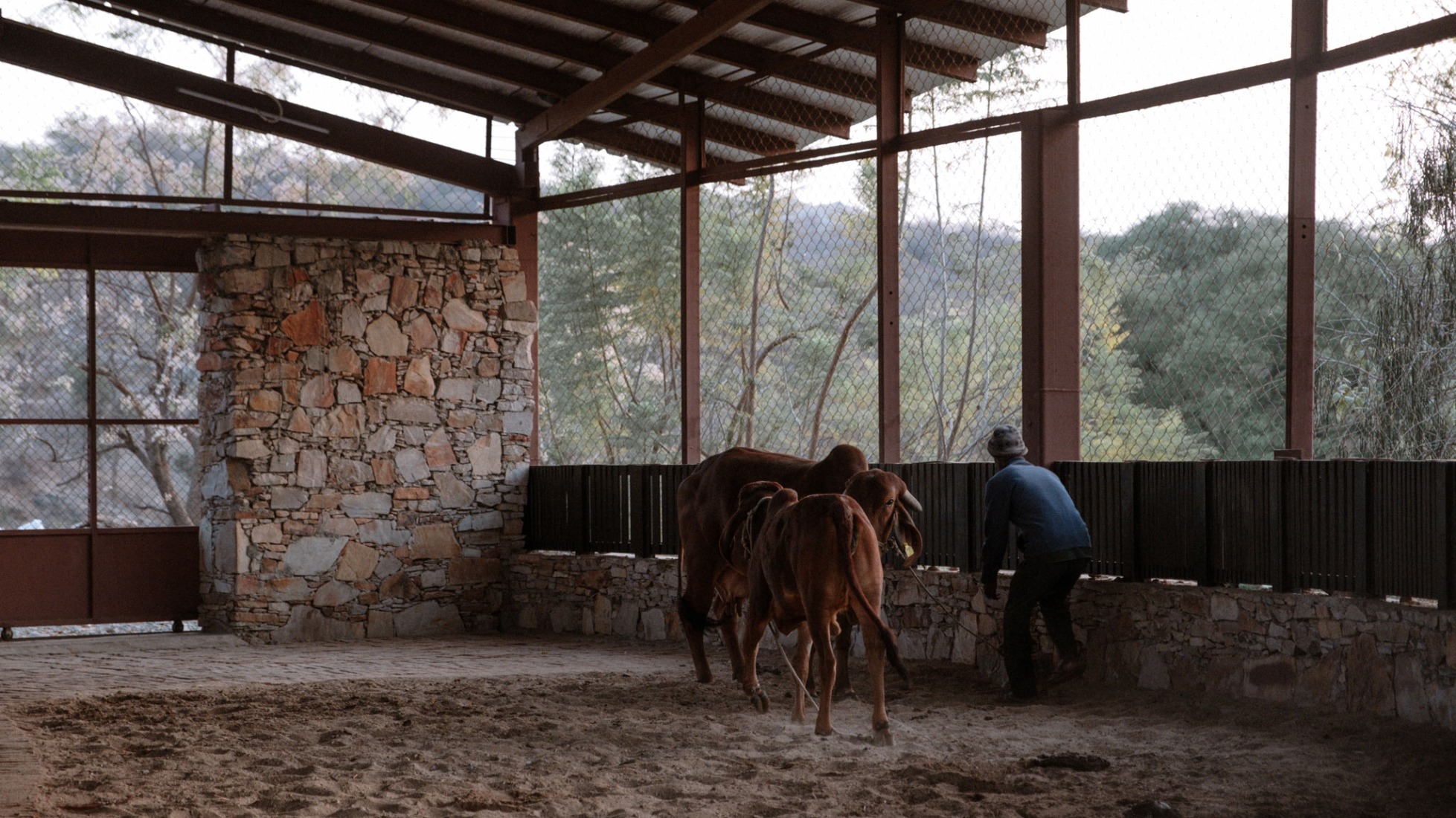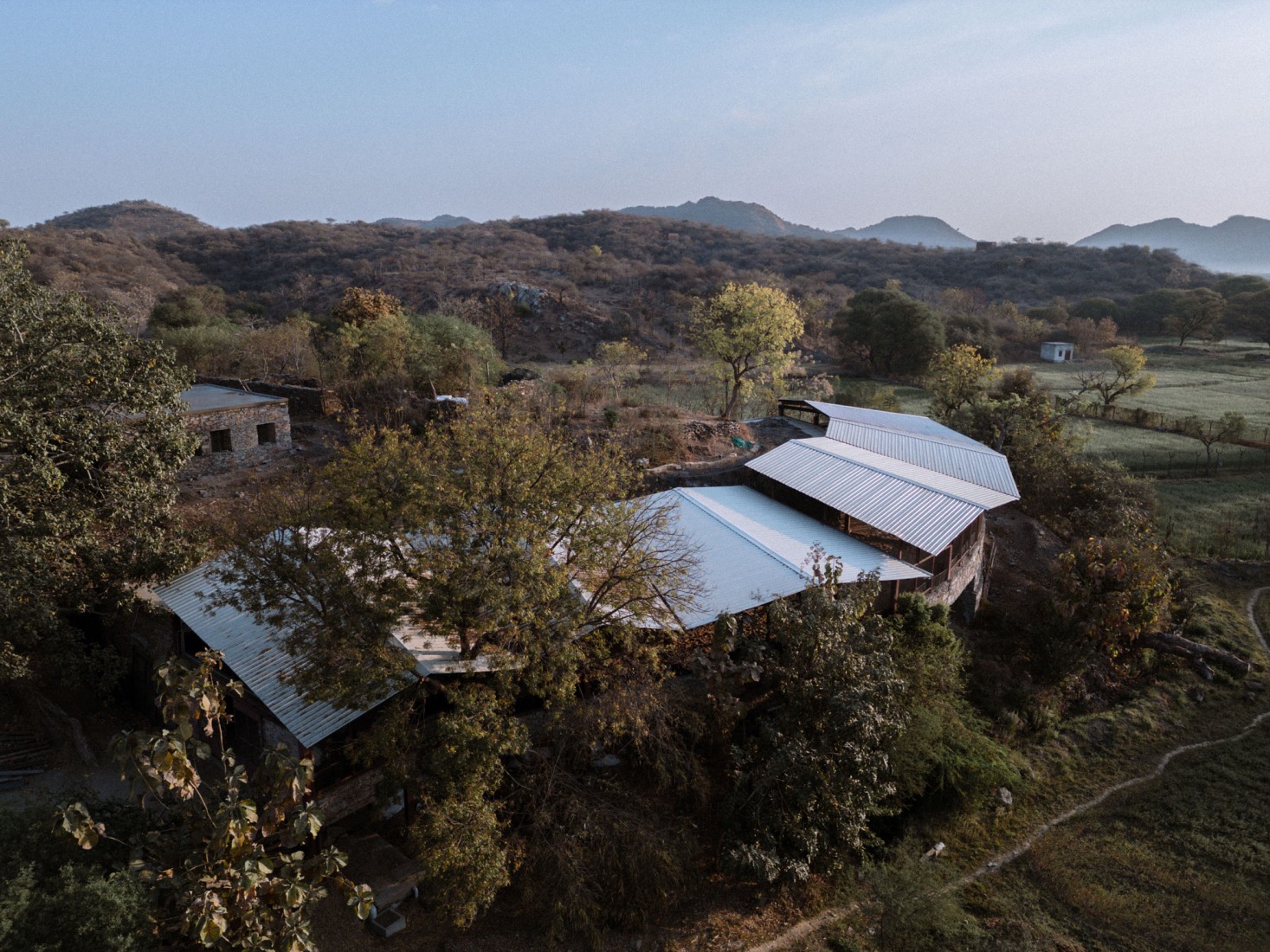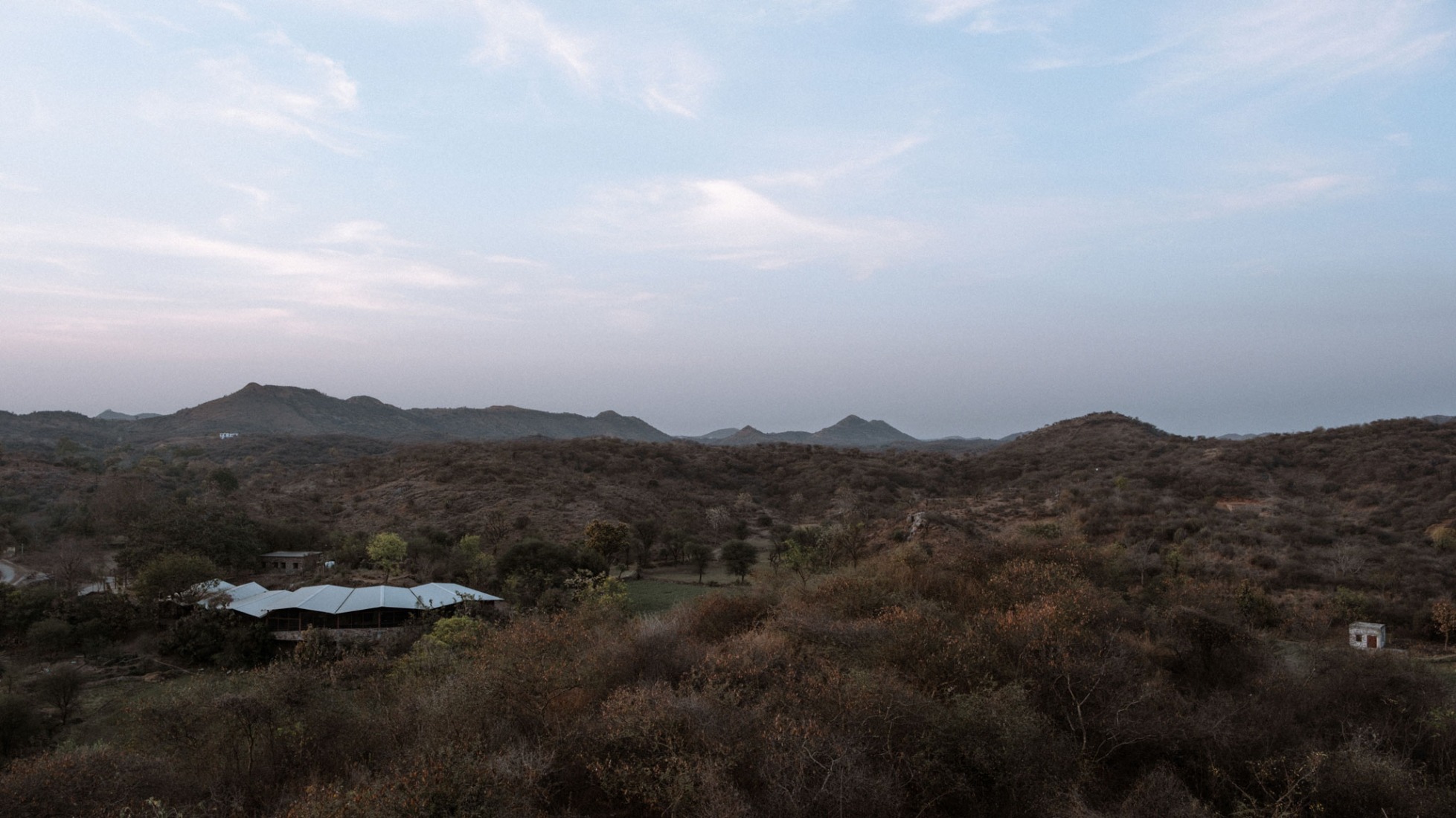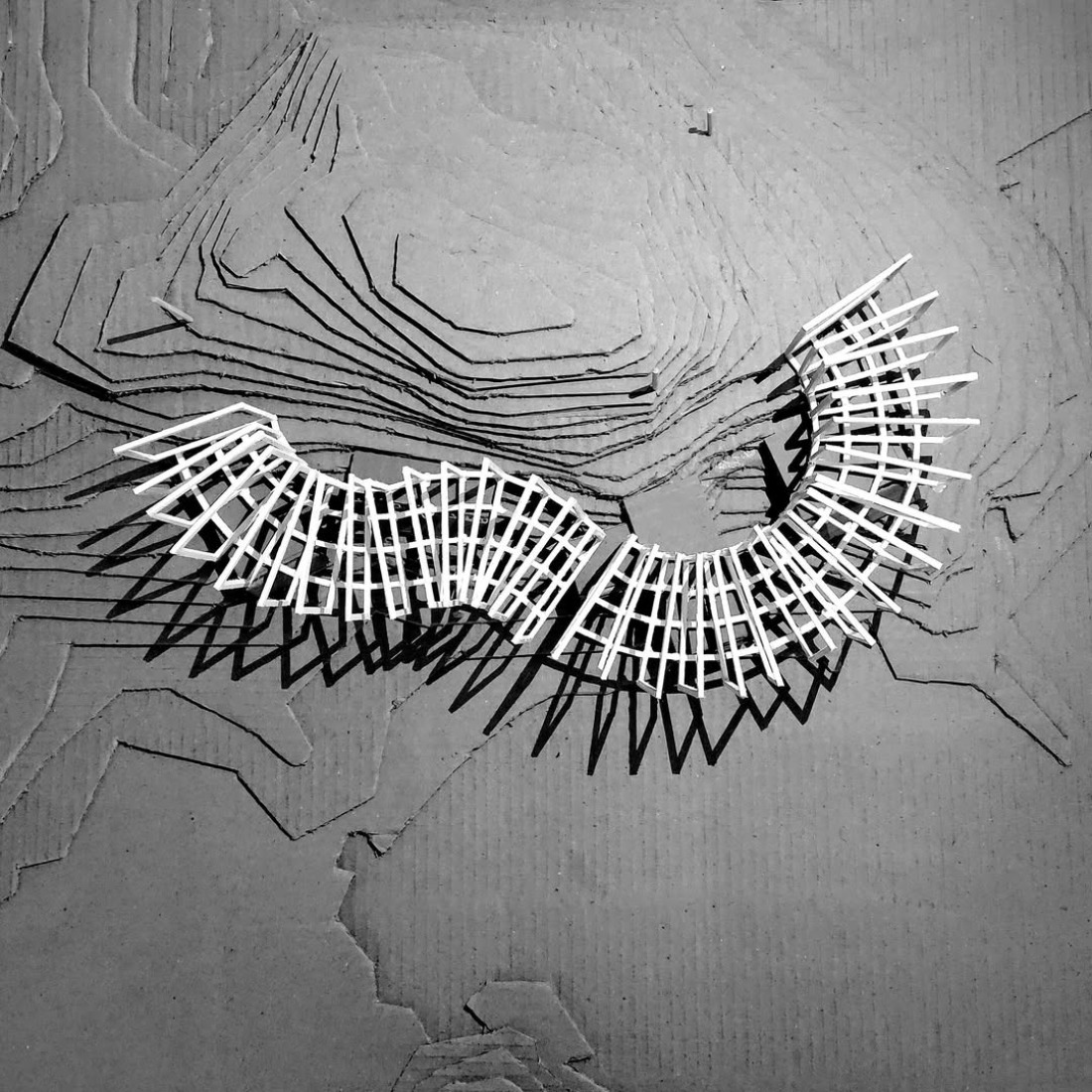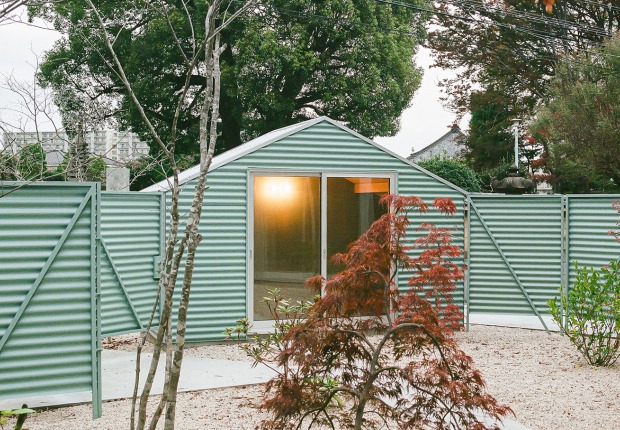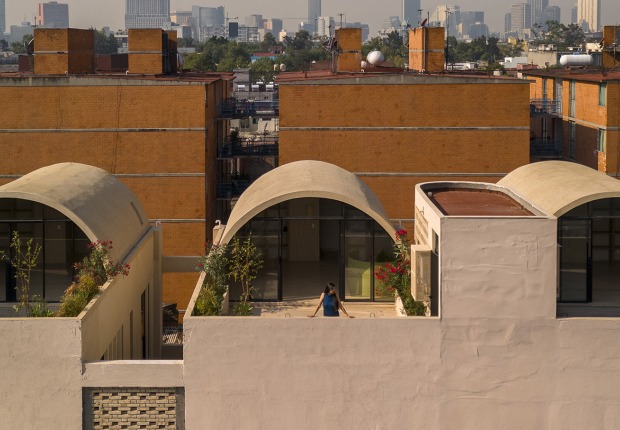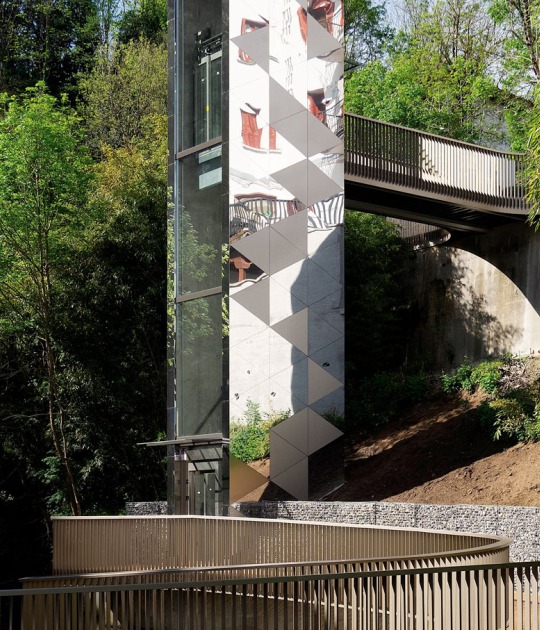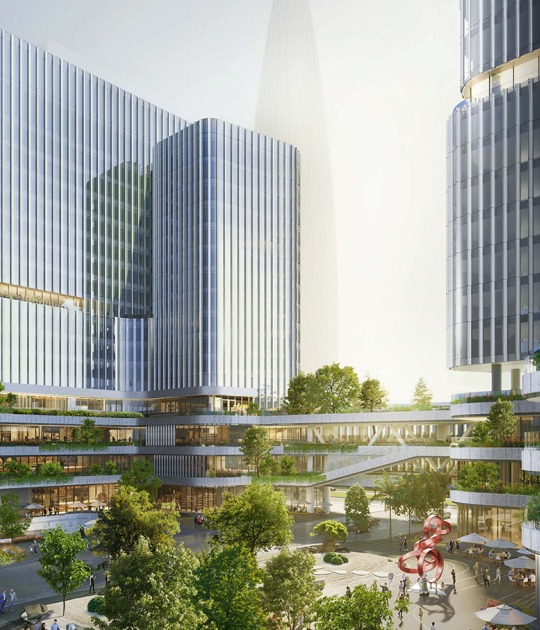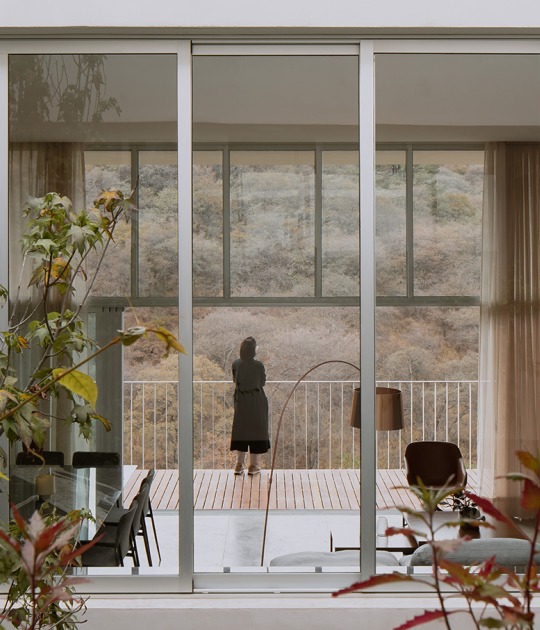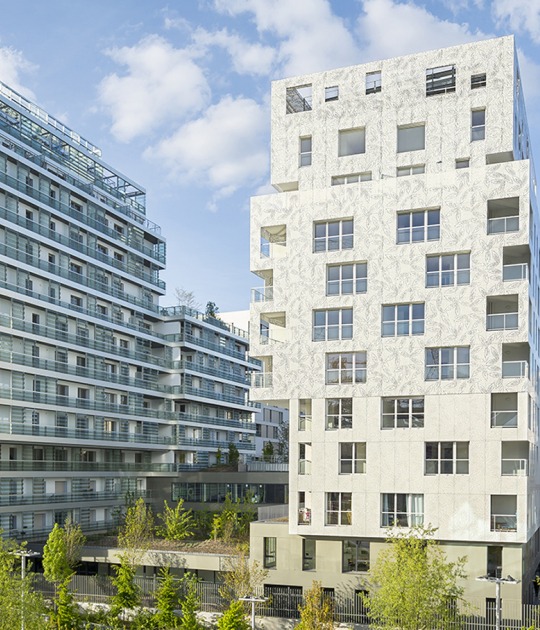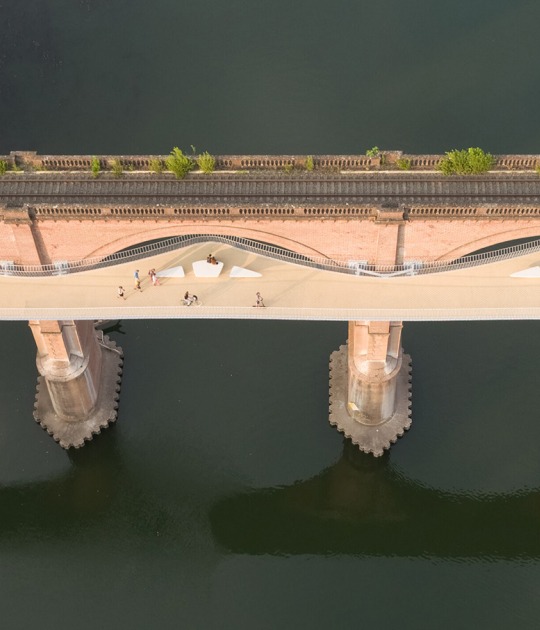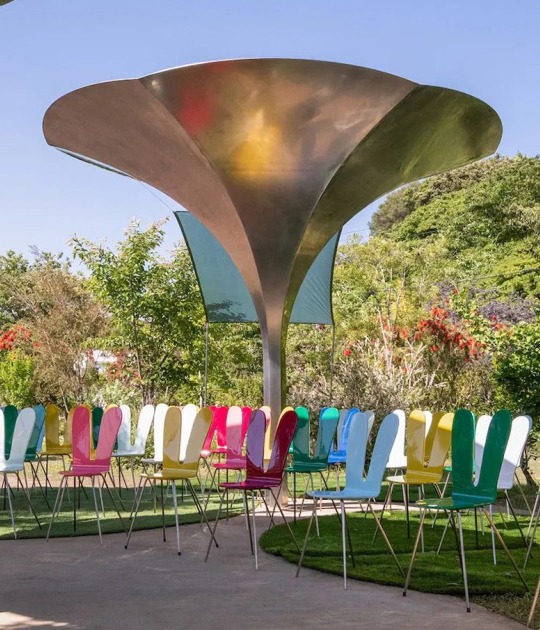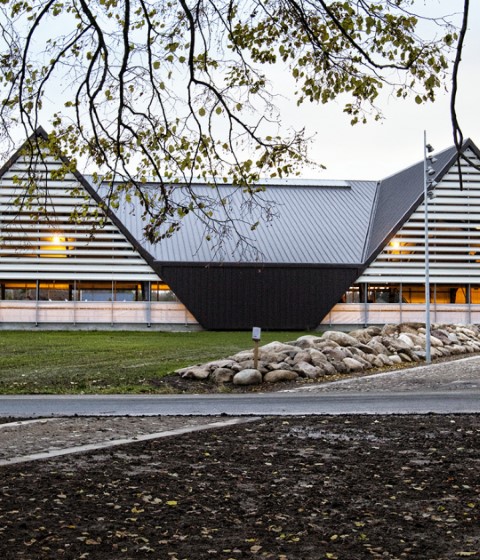The location chosen by Studio Saar provides natural shelter from the prevailing westerly winds while allowing a gentle breeze to enter, discouraging flies and dispersing odours. The complex nature of the site, with its rock formations and large tree roots below the surface, meant that the design had to be adapted during the construction phase, leading to a complex, contextual response to the brief.
The design pays special attention to the client’s commitment to sustainability, the structure has been designed in line with circular principles, with all building materials sourced within a 30km radius. Waste material from an existing building that was deemed structurally unsound – including 360 tonnes of reclaimed structural steel and 200 tonnes of stone rubble and crushed concrete – has been reused within the project, while locally available waste granite was sourced for the foundations.
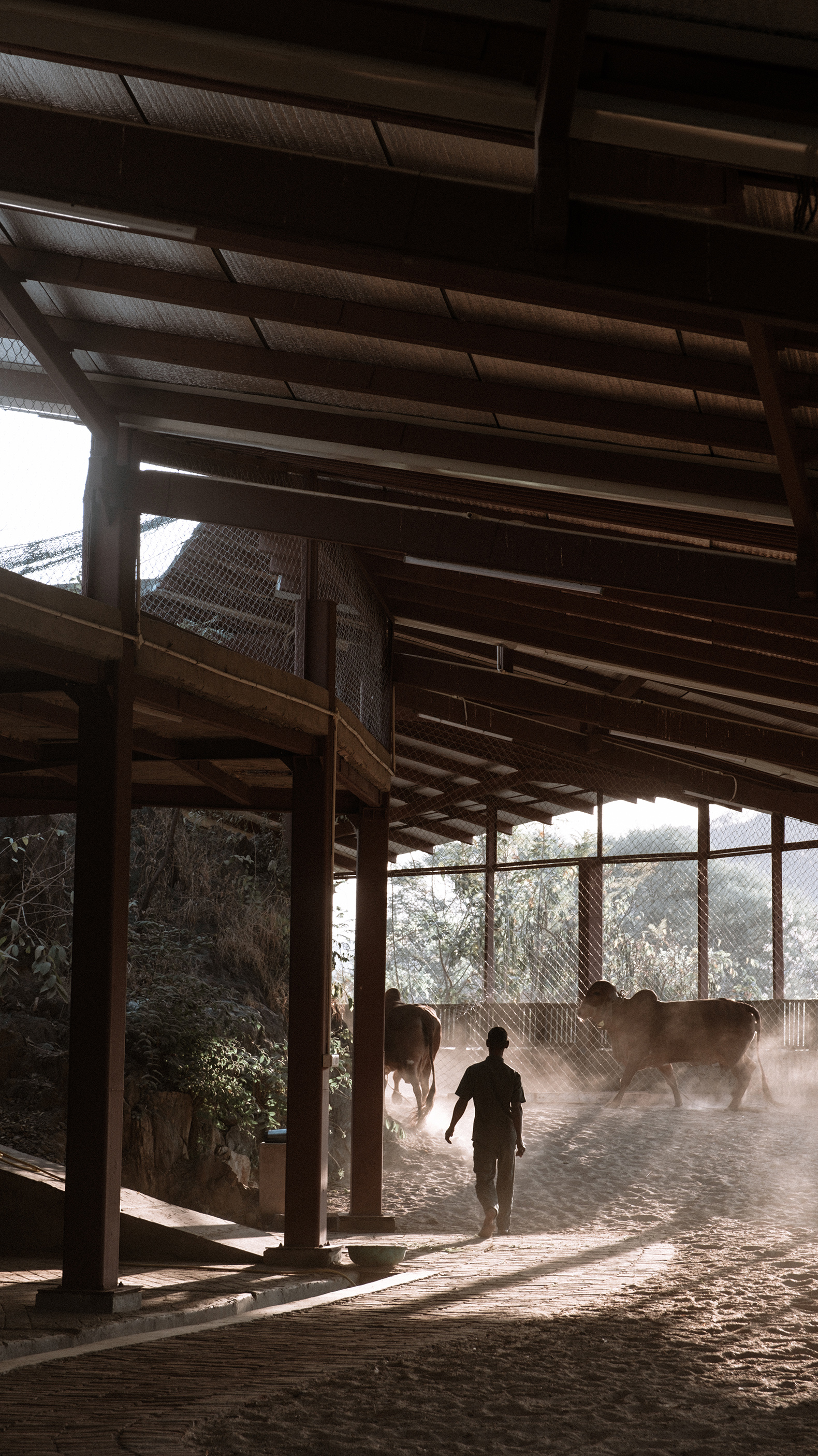
Cowshed by Studio SAAR. Photograph by Eshwarya Grover.
Studio Saar used structural steel to create a load-bearing skeleton of portal frames over the landscape, preserving existing vegetation while following the contours of the land. This approach led to the integration of a mature tree and a rock formation within the building. Stone masonry walls along the outcrop create a sense of enclosure but form only a low wall on the other side, enabling panoramic views of the surrounding farmland.
Gaushala’s interior is secured by a chain-link fence, protecting the livestock and workers from wild panthers. The floor consists of broken traditional baked terracotta bricks, laid out in a pattern created with the contractor to optimise drainage and provide sufficient grip, while also ensuring comfort for the cows. A simple gravity system collects agricultural waste, allowing the farm to produce biofuel and making its ongoing operation self-sufficient.
The facility’s roof features a large overhang to protect the cows and the agricultural workers during rain and other extreme weather conditions. One half of the roof accommodates traditional Indian agricultural activities, such as making organic ghee and sun-drying spices and millets, which provide employment opportunities for local women. The other half consists of a lightweight insulated structure that could accommodate solar panels, future-proofing the building should the biofuel electric plant become insufficient in future.
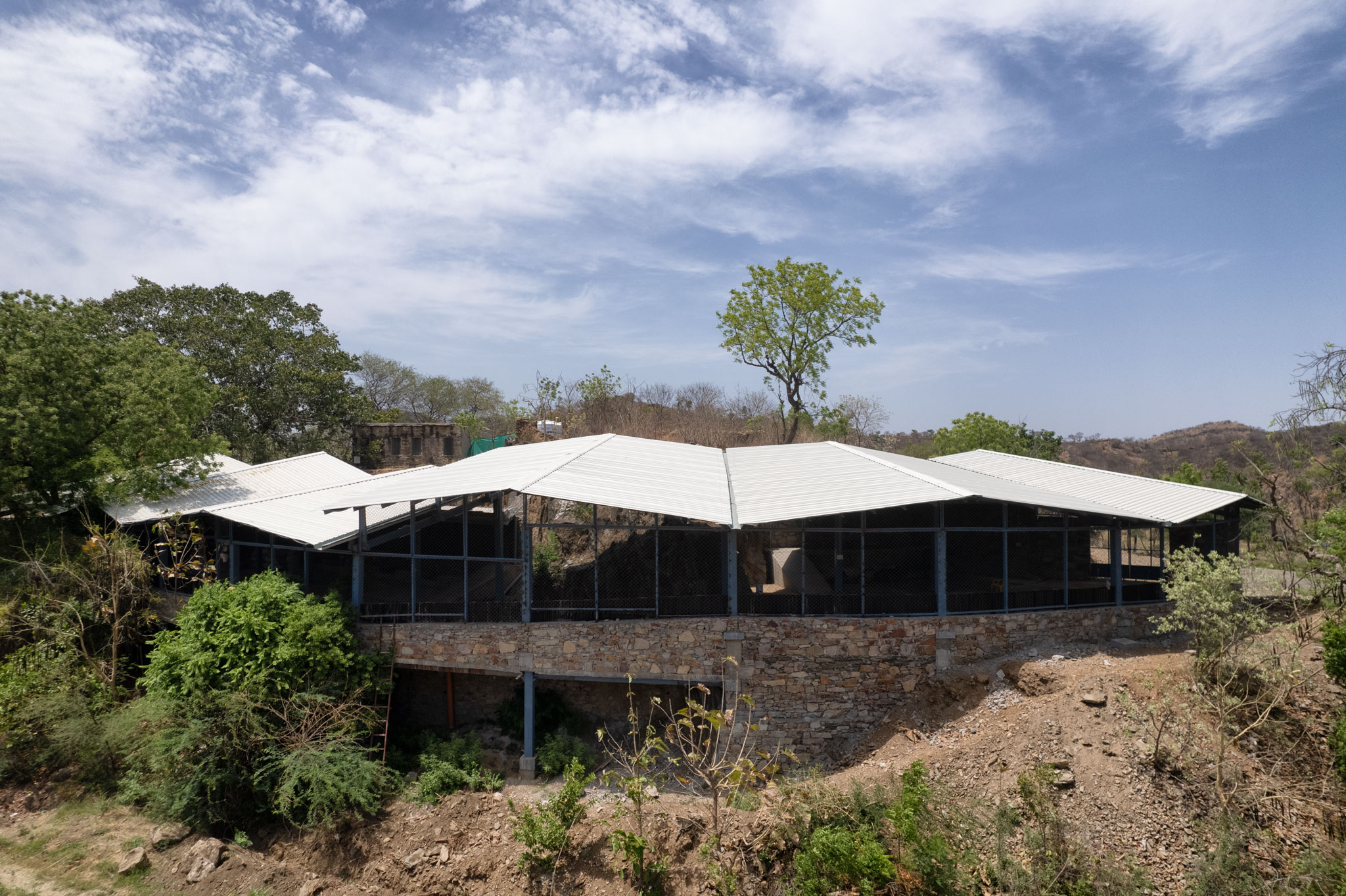
Cowshed by Studio SAAR. Photograph by Ananya Singhal, Studio Saar.
India’s population of Gir cows declined rapidly during British colonial rule and the subsequent introduction of European livestock, despite being better adapted to the country’s climatic conditions. Using a hybrid of modern and traditional Indian organic practices, Gaushala will provide accommodation for a thoroughbred herd, keeping them genealogically pure and separate from the more common mixed breed.
“Gaushala demonstrates Studio Saar’s commitment to providing well-considered spaces to all, from cowherds to corporations. Reusing existing components and materials can be challenging, but doing so can help us reduce waste while producing thoughtful buildings that are embedded in their context. Gaushala will provide stable employment for the locals and contribute towards conservation of the indigenous Gir cow, while being able to produce its own energy through a combination of solar and biofuel, combining social and environmental sustainability.”
Ananya Singhal, co-founder and Managing Partner of Studio Saar.


